Bluetooth headsets are polarizing devices. Some folks view them as necessities while others regard them as a sign of self absorption and depersonalization. Luckily as the technology has improved and the components minimized the Bluetooth headset has become less noticeable resting on the users head.
With the evolution of cell phones to Blackberries, iPhones, Treos and high tech cell phones, Bluetooth headset creators have had to step up their designs. Aesthetics play as much a part in Bluetooth headset creation as the technology that resides within them.
SoundID is one of the cutting edge Bluetooth headset makers who realize this new paradigm. Founded in 2000 by Otologist Dr. Rodney Perkins; SoundID was created to produce devices that mimics the ears own sound processing ability. By assembling engineers and scientists specializing in psychoacoustics SoundID is able to design unique Bluetooth headsets.
This past month SoundID has released the follow up to the SoundID 200, the aptly named SoundID 300. This Bluetooth headset features noise cancellation technology, volume compensation, automatic volume control and dual microphones. All these features and more are packed into a small form factor making the SoundID 300 an unobtrusive yet stylish alternative to bulkier cell phone headsets.
The Sound ID 300 comes in a predominantly white package with the headset centered in the middle of the box. On the back of the package Sound ID lists the features of the device above a clear window that houses three additional ear pieces.
Opening the box we find the SoundID 300 headset, a micro-USB charging cable, Universal AC charger, Quick Start Guide/User Manual, three sizes of RealComfort Ear Loops and an Ear Hook for an alternative over-the-ear wearing option.
The SoundID 300 is composed of plastic and has a piano black finish on the front portion and a matte black appearance on the device’s backside. It weighs 8 grams (0.28 ounces) and measures 53.5 x 15.5 x 7.5 millimeters (2.1 x 0.6 x 0.3
On the front we find the status light. SoundID has installed dual microphones located near the earpiece and the other towards the end pointed towards one’s mouth.
The backside of the headset houses the Real Comfort Ear Loop and the Micro USB charging socket.
Here we also find a right or left ear placement indicator. Turning the Ear Loop to the appropriate side will determine whether the SoundID 300 is used in the right or left ear.
The SoundID 300 has two buttons – the Main Button located towards the ear end of the headset and the Volume/Personal Sound Program button located adjacent to the Ear Loop on the side of the device. Depending on whether the SoundID 300 is in the right or left ear will determine the position of this button – above or below the Ear Loop.
Another innovative aspect of the SoundID 300 is the Ear Loop design for wearing the headset. It is composed of a soft rubbery black silicone and is available in three different sizes. If you prefer a more standard over the ear style, SoundID provides the adapter for that style too.
Specifications:
Sound ID 300 Bluetooth Headset
With a high gloss piano black finish, the lightweight Sound ID 300 displays a sophisticated design and differentiates itself from other Bluetooth headsets with innovative functionality, including NoiseNavigation™ and PersonalSound™. NoiseNavigation™ provides clear audio through the automatic reduction of background noise, while PersonalSound™ allows users to select from three listening modes that enhance speech clarity without raising the volume.
“Created by our experienced team of hearing specialists and acoustic scientists, the Sound ID 300 brings an in-depth knowledge of the human ear to the Bluetooth arena,” said Michael Jones, President and CEO of Sound ID. “We believe its unique feature set, pristine sound clarity and exceptional comfort make it the ideal complement to any Bluetooth-enabled phone.”
Among the Sound ID 300’s technology features, users will enjoy:
NoiseNavigation – This proprietary development optimizes speech intelligibility at both ends of the conversation, as dual microphones isolate speech and DSP algorithms automatically reduce wind and background noise.
PersonalSound – Users can choose from three listening modes – tuned to the most common hearing preferences – to further enhancing speech clarity without raising the volume.
Automatic Volume Control – This feature eliminates the need for constant volume adjustment in variable noise situations such as driving.
Universal Charge – Users no longer need to carry multiple chargers, as the Sound ID 300 can be charged by standard micro USB chargers.
Secure Pairing – The Sound ID 300 supports secure pairing with Bluetooth 2.1 handsets for simplified mating of the phone with the headset.
RealComfort EarLoops – Created for extended wear, the headset comes with scientifically designed EarLoops to provide a secure and comfortable fit and better channel sound into the ear for enhanced listening.
Sound ID 300 Specifications
Lightweight: 8 grams (0.28 ounces)
Dimensions: 53.5 x 15.5 x 7.5 millimeters (2.1 x 0.6 x 0.3 inches)
Powerful Battery Life: Up to 6 hours talk time, 220 hours (9 days) standby
Latest Bluetooth Technology: Bluetooth version 2.1+EDR with eSCO improves the transmission sound quality and is compatible with earlier versions of Bluetooth.
Contents
It comes with a Universal AC charger (100-240 VAC), USB charging cable, three sizes of RealComfort EarLoops and an Ear Hook for an alternative over-the-ear wearing option.
The SoundID 300 works like any other Bluetooth headset with some nice additional features. Prior to initial use, SoundID recommends initially charging the device for four hours. Subsequent recharges will take 2.5 hours for a full charge. Charging is performed using the Micro USB cable which can be plugged into the included AC charger or into a PC USB source.
For testing I used the SoundID 300 with my iPhone 3G and compared it to the Aliph Jawbone 2 and an older Motorola Bluetooth headset.
Syncing the headset took a few seconds as the headset automatically goes into pairing mode until it is successfully paired; otherwise pairing is accomplished by holding down the Main Button on the headset for eight seconds until the indicator light flashes red and green. Next wait for your device to recognize the SoundID 300 and enter the pass code of 0000 when requested by the cell phone. Once pairing is finished the SoundID 300 status light will stop flashing and the device will remain on ready to use.
The SoundID 300 can be worn on either the right or left ear by rotating the Ear Loop towards the L or R mark on the inside of the earpiece. The SoundID 300 is worn by resting the ear tip on the outer ear canal and tucking the Ear Loop portion in the inside bowl on you ear. Adjust the opposite tip of the headset to be aimed towards the mouth.
To power on the device, press the Main Button for approximately three seconds to turn it on; at this point the status light will flash green. Cell Phone volume is controlled by pressing the Volume/Personal Sound Program button on the edge of the headset. The volume is cycled up with each button press and an audible beep is heard at maximum volume; upon the next press the volume will go back down to the lowest step. There are four volume settings in total.
A unique feature to the SoundID 300 is the ability to choose a personal sound level. Using the Volume/Personal Sound Program button the user can cycle through the three available enhancement levels. To cycle through these enhancements hold the button for approximately two seconds until you hear one, two or three beeps. Normal is the single beep with the Medium and Strong enhancements at two and three respectively.
Answering a phone call can be done via the cell phone or by pressing the Main Button on the SoundID 300 when the phone rings. Pressing the Main button again will end the call. To make a phone call use the cell phone normally and the audio will automatically transfer to the SoundID 300 headset.
Some advanced options for the SoundID 300 include Call Mute, Call Reject, Answer Call Waiting, Swapping Active Call, Call Hold, Redial, and Voice Dialing (if your phone supports that feature).
To shut off the headset, press and hold the Main button for three seconds. There is one LED indicator light that flashes green or red depending on the situation. Power on the SoundID 300 and the light turns green, all is well, if it turns red then the battery is low and has less than 30 minutes of charge.
SoundID includes three RealComfort ear loops (small, medium and large) with the medium one coming pre-installed on the device. Changing them involves pulling it away from the headset and then snapping on the replacement ear loop. In addition SoundID allows the headset to be converted into an Over the Ear style by providing a ear hook style with a soft cushion.
The Ear Loop is a novel was of keeping the headset in ones ear. Instead of the ear piece being lodged into the ear canal it sits on the outer opening of the canal and remains primarily in place via the loop portion that pushes against the inner bowl of the user’s ear. Surprisingly this method keeps the headset securely in place while providing no pressure on the ear canal to cause any discomfort.
I can easily say that between the Ear Loop design and the lightness of the SoundID 300 that it is the most comfortable Bluetooth headset I have worn. The SoundID 300 was comfortable even after several hours of wear. Unlike competitors such as the Aliph Jawbone 2 which pulls or pokes on ones ear with the over the ear hook style or in ear orientations.
Another superb aspect of the SoundID 300 is the battery life. My charge lasted two weeks with standby and turning off the device when not using it during the work day. With the same pattern of use charges in competing products usually last one week to ten days
Aesthetically the SoundID 300 is a nice looking device. Its piano black finish makes it look sleek and stylish while the form factor is minimalist and unobtrusive. The buttons are small and barely noticeable especially from a distance. Unlike the Jawbone 2 where the button can accidentally be pressed in mid-call especially when repositioning the headset, the SoundID buttons are less likely to be pressed for accidental calls.
Additionally, the headset does not scream “look at me I am wearing a Bluetooth headset!” Kudos to the SoundID design team in that respect.
Incoming calls sounded very good, the SoundID 300 did an admirable job of adjusting the volume of the call based on the ambient surrounding noise level. Occasionally I did hear some echo when talking to one specific person but I think that may have been an issue on his end since I did not have the problem with any of my other contacts.
Unfortunately not all is perfect with the SoundID 300. People on the other end of my calls describe the sound quality as being muddy and sounding like I was under water or on a speaker phone. This was the same tonal quality people mentioned with the $30 Motorola headset. Rather a disturbing issue for a product so otherwise well designed. The Aliph Jawbone 2 was regarded as the best sounding out of the three Bluetooth headsets.
To verify the results I called my Voice Mail and heard the results for myself. I was rather disappointed by this aspect. The SoundID 300 would have been a Jawbone “killer” if not for this detail.
Conclusion:
The SoundID 300 is a nice Bluetooth headset and has several excellent features over its competitors. It is the most comfortable headset that I have encountered. It can be easily worn for hours without the even noticing that it is there. Additionally it is small and unobtrusive so the wearer will not stand out in the crowd by wearing the SoundID 300.
The negative about the device is sound related. Unfortunately the outgoing sound is poor to say the least. For a company focused on acoustics one would figure that sound quality would be at the forefront of the device. While not a deal breaker, for the price I would have like the outgoing sound to be on par with similarly price devices. Otherwise bring the price down to a more manageable range especially in light of the current economy.
Pros:
+Excellent incoming sound
+Superb Battery Life
+Comfortable
+Stylish
+Low Profile
Cons:
-Garbled outgoing sound transmission
-Price
| Grades: | |
| Overall |  |
| Design |  |
| Performance |  |

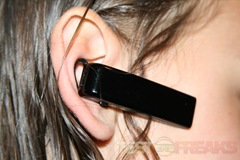
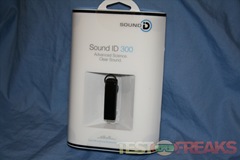
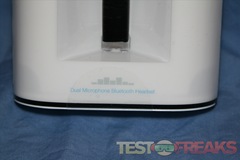
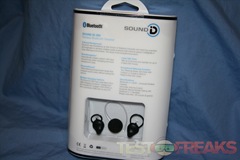
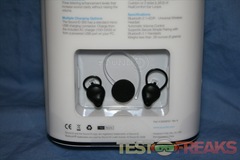
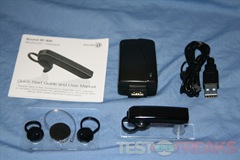
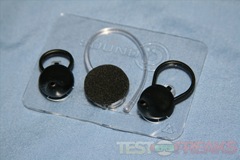
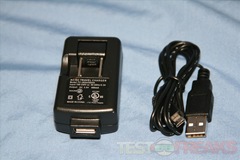
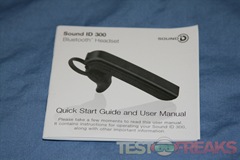
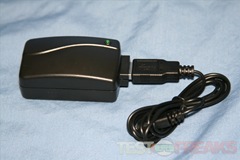
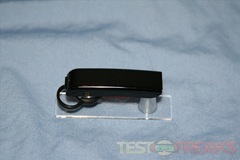
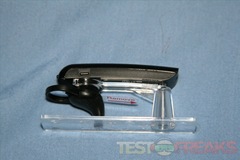
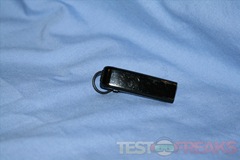
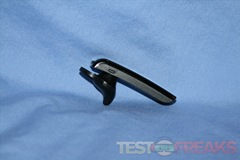
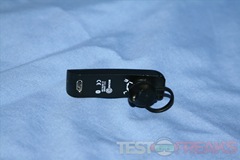
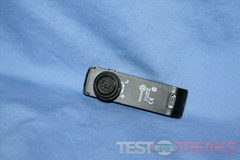
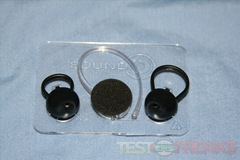
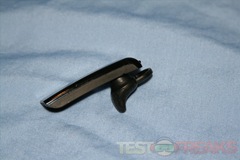
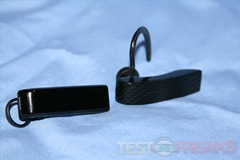
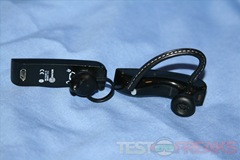
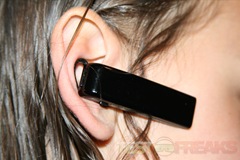





7 comments for “Sound ID 300 Bluetooth Headset”